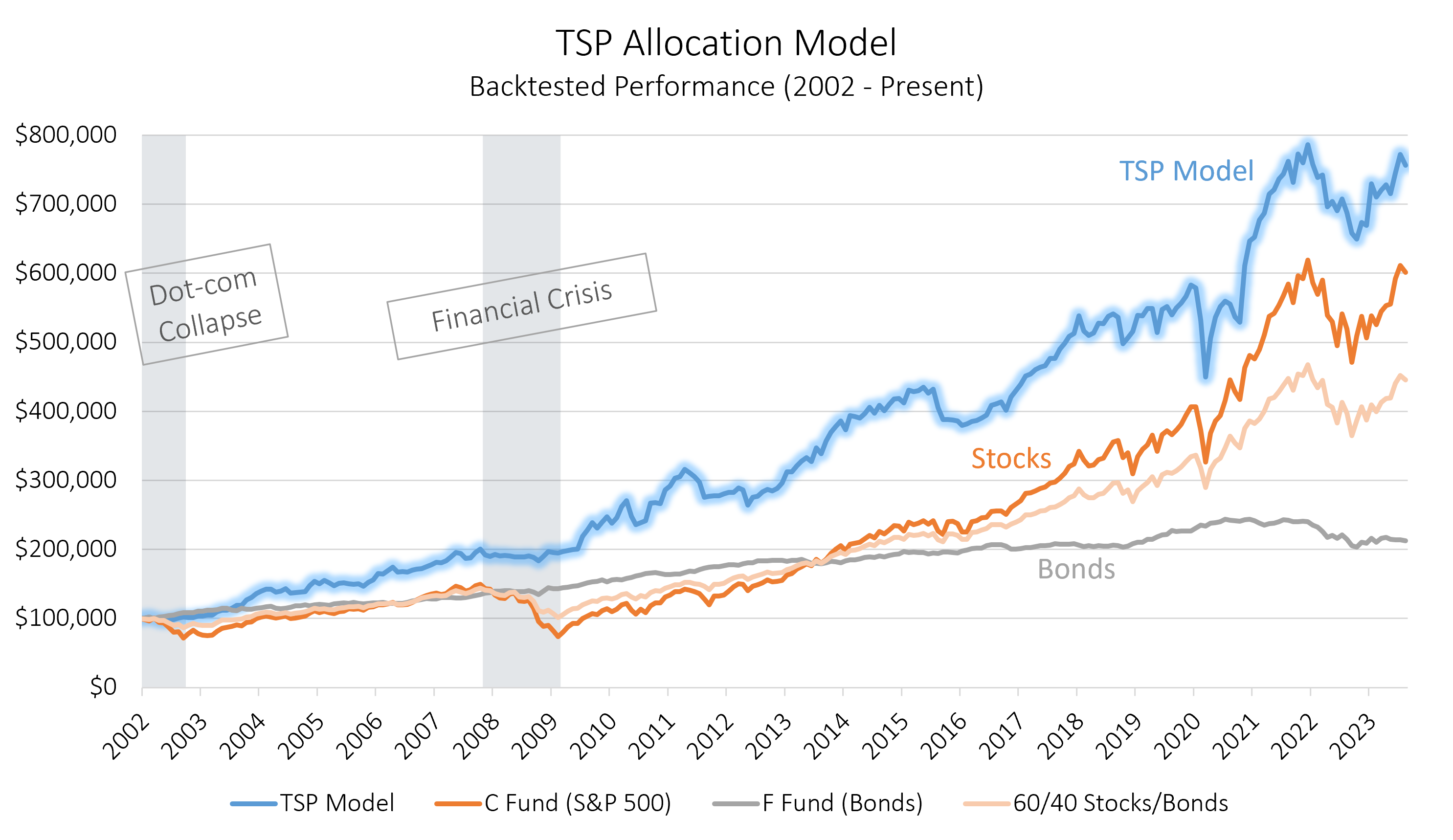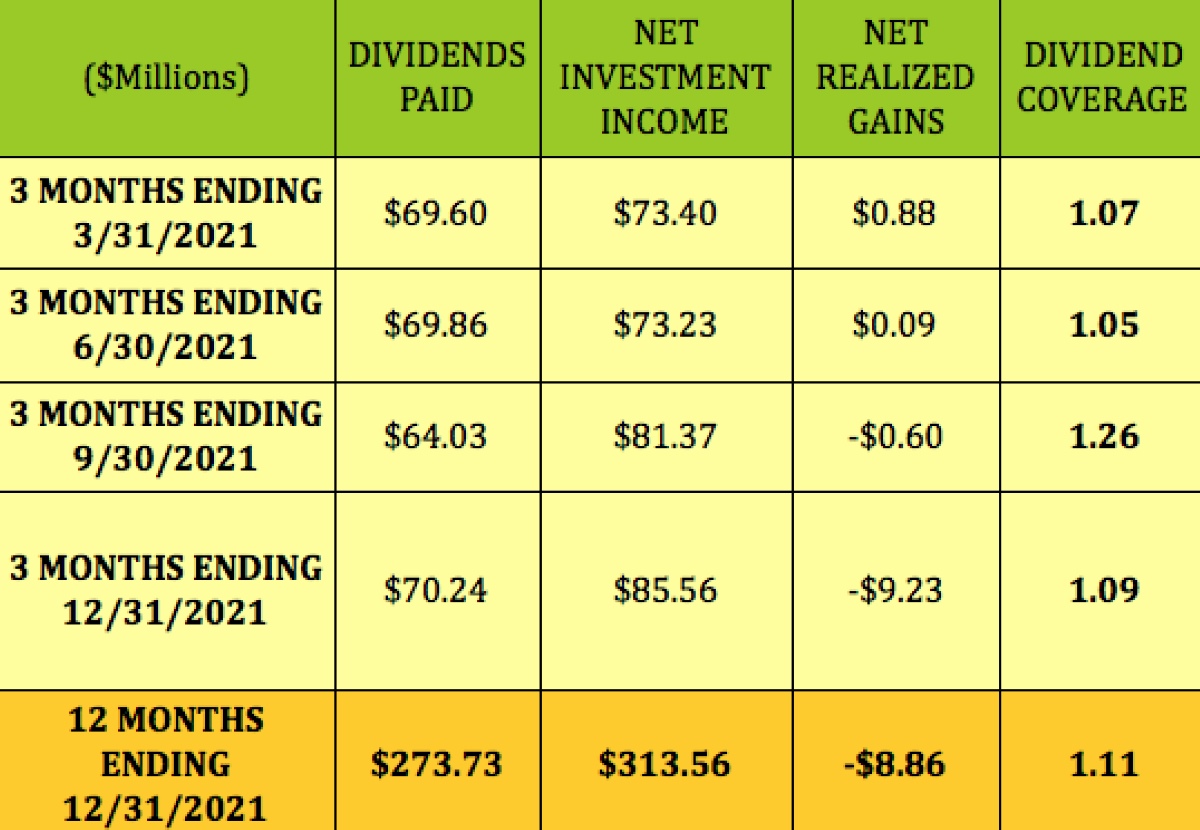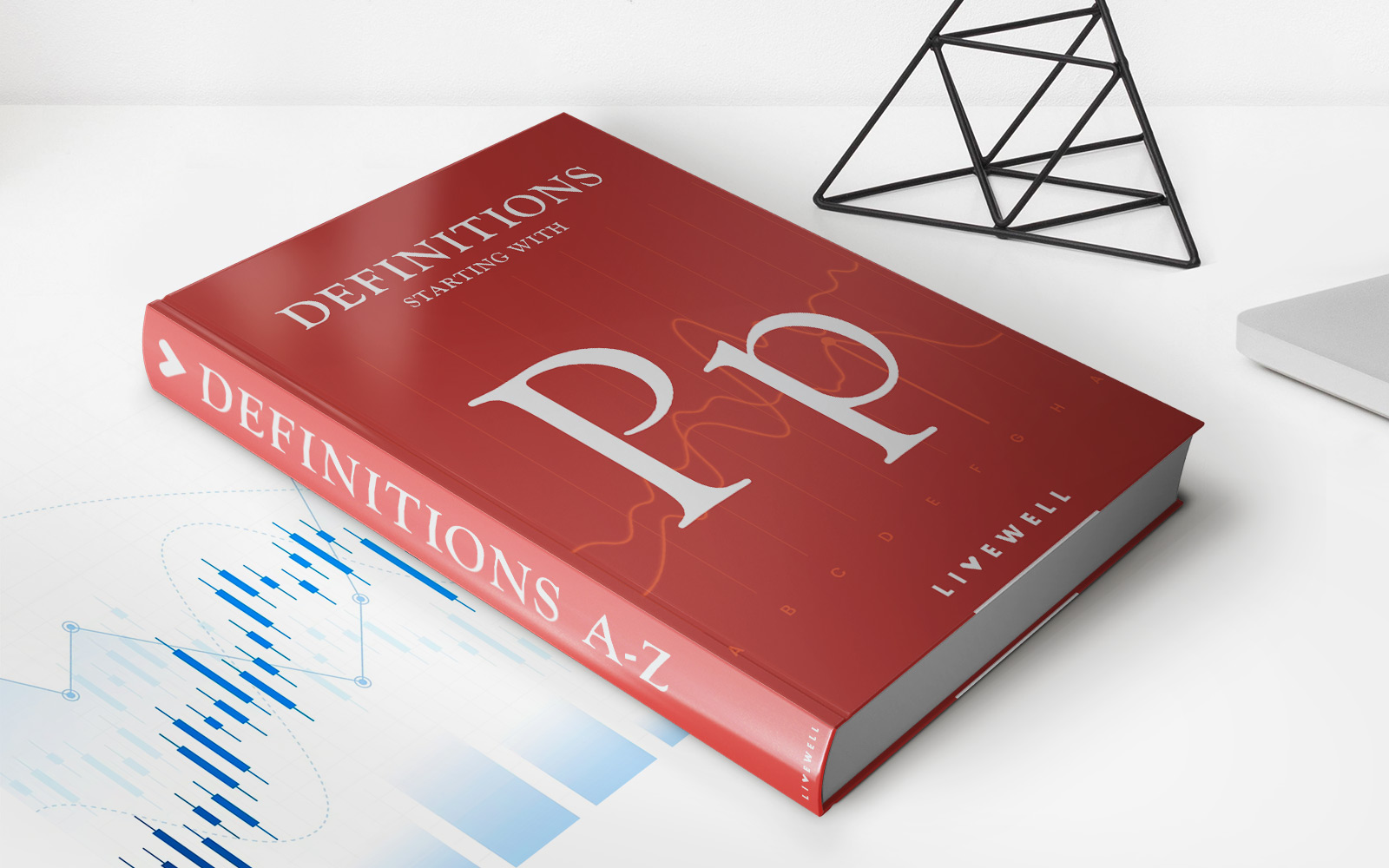

Finance
What Is A Blended Fund Investment?
Published: October 17, 2023
Discover the benefits of blended fund investments and how they can help you diversify your financial portfolio. Explore different strategies in finance through this investment option.
(Many of the links in this article redirect to a specific reviewed product. Your purchase of these products through affiliate links helps to generate commission for LiveWell, at no extra cost. Learn more)
Table of Contents
Introduction
Welcome to the world of finance, where investment opportunities are abundant and diverse. As an investor, it is essential to explore different avenues to grow and diversify your portfolio. One such avenue is through blended fund investments. Blended fund investments offer a unique and effective way to combine different types of funds into a single investment vehicle.
A blended fund is a type of investment that combines multiple asset classes, such as stocks, bonds, and cash, into a single fund. This approach allows investors to benefit from the diversification and potential returns that come from investing in various asset classes. Blended funds are designed to balance risk and reward, providing investors the opportunity to achieve steady returns while minimizing volatility.
Blended fund investments have gained popularity over the years due to their versatility and potential for long-term growth. By investing in a blended fund, investors can take advantage of different market conditions and capture opportunities across various sectors.
Unlike traditional mutual funds that are solely focused on a specific asset class, blended funds offer a diversified approach. This diversification helps to reduce the impact of market fluctuations and potential losses, providing a more stable investment option.
Blended funds can be actively managed or passively managed, depending on the investment strategy. Actively managed blended funds are overseen by professional fund managers who actively make investment decisions based on market trends and analysis. Passively managed blended funds, on the other hand, aim to replicate the performance of a specific index or benchmark.
In the following sections, we will delve deeper into the definition, benefits, types, risks, and considerations for investing in blended funds. By understanding these factors, you will be better equipped to make informed investment decisions and navigate the complex landscape of the financial market.
Definition of Blended Fund Investment
A blended fund investment, also known as a mixed fund or multi-asset fund, is a type of investment vehicle that combines multiple asset classes into a single fund. The purpose of this blending is to create a diversified portfolio that can potentially generate consistent returns while minimizing risk.
Blended funds typically include a mix of stocks, bonds, cash, and other securities, depending on the investment strategy and objectives. The allocation of these assets is determined by the fund manager, who analyzes market conditions, economic trends, and other factors to make informed investment decisions.
The main goal of a blended fund is to strike a balance between growth and stability. By diversifying the portfolio across different asset classes, blended funds aim to capture potential gains from various sectors while minimizing the impact of downturns in any particular sector.
Blended funds can vary in terms of their asset allocation, risk level, and investment approach. Some blended funds may have a more conservative approach, with a higher allocation towards fixed-income securities such as bonds and cash, while others may have a more aggressive approach, with a larger allocation towards equities.
One of the key advantages of blended fund investments is that they offer investors access to a broader range of investment opportunities. By investing in a single blended fund, investors can gain exposure to multiple asset classes without the need to research and manage individual investments themselves.
Furthermore, blended funds can provide a way for investors to achieve a balanced and diversified portfolio without the need for regular rebalancing. The fund manager regularly adjusts the allocation of assets within the fund to maintain the desired risk and return profile.
Overall, a blended fund investment offers investors the potential for long-term growth, stability, and diversification. It is important for investors to carefully consider their investment goals, risk tolerance, and the specific objectives and strategies of the blended fund before making any investment decisions.
Benefits of Blended Fund Investment
Blended fund investments offer several advantages that make them attractive to investors. Here are some key benefits:
- Diversification: One of the primary benefits of blended fund investments is diversification. By combining different asset classes, such as stocks, bonds, and cash, into a single fund, investors can spread their risk across various sectors and reduce the impact of any individual security or market downturn. Diversification helps to stabilize the portfolio and potentially generate more consistent returns over the long term.
- Professional Management: Blended funds are typically managed by experienced and knowledgeable fund managers who analyze market trends, economic indicators, and other factors to make informed investment decisions. This professional management can be advantageous for investors who may not have the time or expertise to actively manage their own investment portfolio.
- Access to Multiple Asset Classes: By investing in a blended fund, investors gain exposure to multiple asset classes within a single investment. This access allows them to participate in the growth potential of different sectors and adapt to changing market conditions. In addition, it provides the opportunity to benefit from the expertise of the fund manager in selecting and managing a diverse range of assets.
- Convenience: Investing in a blended fund offers convenience and simplicity. Instead of managing multiple investments across various asset classes, investors can have a diversified portfolio within a single fund. This reduces the administrative burden and makes it easier to track and monitor investments.
- Liquidity: Blended funds are typically open-ended, meaning investors can buy and sell their shares at any time. This liquidity allows investors to access their funds when needed, providing flexibility and ease of managing their investments.
- Potential for Balanced Returns: Blended fund investments are designed to balance risk and reward. The combination of different asset classes can help smooth out fluctuations and potentially generate more stable returns over the long term. This balanced approach may be particularly appealing to investors who seek a more conservative investment strategy.
It is important to note that while there are many benefits to blended fund investments, they also come with their own set of risks and considerations. Investors should carefully evaluate their investment goals, risk tolerance, and the specific characteristics of the blended fund before making any investment decisions.
Types of Blended Fund Investments
Blended fund investments come in various types, each with its own unique characteristics and investment strategies. Here are some common types of blended fund investments:
- Target Date Funds: Target date funds, also known as lifecycle funds, are blended funds that are designed to align with a specific target retirement date. These funds gradually shift their asset allocation over time, becoming more conservative as the target date approaches. They balance the allocation between equities and fixed-income securities based on the investor’s time horizon and risk tolerance.
- Asset Allocation Funds: Asset allocation funds maintain a pre-defined mix of asset classes. These funds typically have a target asset allocation percentage for each asset class, such as stocks, bonds, and cash. The fund manager continuously adjusts the allocation to maintain the desired balance. This type of blended fund can vary in risk level and return potential based on the specific asset allocation strategy.
- Balanced Funds: Balanced funds, also known as hybrid funds, aim to provide a balanced exposure to both equities and fixed-income securities. These funds typically maintain a relatively fixed allocation between stocks and bonds. The asset allocation is designed to provide stability and potential growth by taking advantage of the performance of both asset classes.
- Income Funds: Income funds focus on generating a regular income stream for investors. These funds invest in a combination of fixed-income securities, such as bonds and dividend-paying stocks. The primary goal of income funds is to provide a stable income source, making them suitable for investors who prioritize income generation over capital growth.
- Global Allocation Funds: Global allocation funds invest in a mix of domestic and international securities across different asset classes. These funds provide exposure to various geographic regions and markets, allowing investors to benefit from global economic growth opportunities. The asset allocation can vary based on the fund manager’s views on the different markets and sectors.
These are just a few examples of the types of blended fund investments available. It’s important for investors to carefully research and consider the investment objectives, risk profile, and historical performance of each type before making an investment decision.
Furthermore, the specific strategies and asset allocation of blended funds may vary among fund providers. Therefore, it is essential for investors to thoroughly review the fund’s prospectus and consult with a financial advisor to ensure it aligns with their investment goals and risk tolerance.
Factors to Consider when Investing in Blended Funds
When considering investing in blended funds, there are several important factors to take into account. These factors can help you make informed investment decisions that align with your financial goals and risk tolerance. Here are some key considerations:
- Investment Objectives: Determine your investment objectives and what you hope to achieve with your investment. Are you seeking long-term growth, income generation, or a combination of both? Understanding your objectives will help you select a blended fund that aligns with your goals.
- Risk Tolerance: Assess your risk tolerance, or your ability to handle fluctuations in the value of your investment. Blended funds can have varying levels of risk depending on their asset allocation and investment strategy. Consider how comfortable you are with potential fluctuations and align your investment with your risk tolerance.
- Fund Performance: Review the historical performance of the blended fund before making an investment. Look at the fund’s track record over different time periods and compare it to relevant benchmarks. While past performance is not indicative of future results, it can provide insights into the fund’s ability to achieve its stated objectives.
- Fund Expenses: Consider the fees and expenses associated with the blended fund. These can include management fees, administrative costs, and other charges. High expenses can eat into your returns, so it’s important to compare the fees of different blended funds and choose one that offers a favorable balance of cost and value.
- Asset Allocation: Understand the fund’s asset allocation strategy. Different blended funds may have different weightings of stocks, bonds, cash, and other assets. Evaluate whether the asset allocation aligns with your risk tolerance and investment objectives. Additionally, consider how the fund’s asset allocation may change over time and whether it is suitable for your long-term investment plans.
- Fund Manager: Assess the qualifications and experience of the fund manager responsible for managing the blended fund. Look at their track record, investment philosophy, and approach to portfolio management. The fund manager plays a critical role in the fund’s performance, so it’s important to have confidence in their abilities.
- Diversification: Consider how the blended fund diversifies across different sectors, regions, and securities. A well-diversified portfolio can help reduce risk and increase potential returns. Review the fund’s holdings to ensure that it provides adequate diversification according to your investment preferences.
- Investment Time Horizon: Determine your investment time horizon, or the length of time you plan to hold the blended fund. The investment time horizon can influence the appropriate asset allocation and level of risk you are willing to take. If you have a longer time horizon, you may be more comfortable with higher-risk investments.
By carefully considering these factors, you can make more informed decisions when selecting a blended fund that aligns with your investment goals and risk tolerance. It’s also advisable to consult with a financial advisor who can provide personalized guidance based on your specific financial situation.
Risks Associated with Blended Fund Investments
While blended fund investments offer potential benefits, it is important to acknowledge and understand the risks involved. Here are some key risks associated with blended fund investments:
- Market Risk: Blended funds are subject to market risk, which refers to the possibility of loss due to adverse market conditions. Fluctuations in the value of underlying assets, such as stocks and bonds, can impact the performance of the fund. Market risk is influenced by factors such as economic conditions, geopolitical events, and investor sentiment.
- Asset Class Risk: Blended funds invest in multiple asset classes, each with its own unique risks. For example, stocks are subject to the volatility of the equity market, while bonds are susceptible to interest rate changes and credit risk. Understanding the risks associated with each asset class is important in evaluating the overall risk profile of a blended fund.
- Manager Risk: The performance of a blended fund depends heavily on the skills and decisions of the fund manager. If the fund manager’s strategy or execution is ineffective, it can negatively impact the fund’s performance. Additionally, changes in fund management can introduce uncertainty and potentially impact the fund’s future performance.
- Liquidity Risk: Blended funds may face liquidity risk, which arises when the fund’s assets cannot be easily converted into cash without a significant impact on their value. In times of market stress or high redemption demands, the fund may face difficulties in meeting investor redemption requests or may be forced to sell assets at unfavorable prices.
- Currency Risk: If a blended fund invests in international securities, it becomes exposed to currency risk. Currency fluctuations can impact the value of foreign investments when translated back into the investor’s home currency. This risk is more prominent when the investor’s home currency strengthens or weakens against the currency of the foreign investments.
- Concentration Risk: Blended funds that have a significant allocation to a specific asset class, sector, or region may be exposed to concentration risk. If a particular asset class or sector underperforms or faces adverse conditions, it can have a disproportionate impact on the fund’s overall performance. Diversification may help mitigate concentration risk to some extent.
- Interest Rate Risk: Blended funds that allocate a portion of their assets to fixed-income securities are exposed to interest rate risk. Changes in interest rates can impact the value of fixed-income securities. When interest rates rise, bond prices tend to fall, and vice versa. This could result in losses or reduced returns for the fund.
It is important for investors to carefully evaluate these risks and assess their risk tolerance before investing in blended funds. Understanding the risks involved can help investors make informed decisions and select funds that align with their investment goals and risk appetite.
Additionally, it is advisable to review the fund’s prospectus and consult with a financial advisor to gain a deeper understanding of the specific risks associated with the blended fund you are considering.
How to Choose the Right Blended Fund
Choosing the right blended fund is crucial to achieving your investment goals and maximizing returns while managing risk. Here are some key factors to consider when selecting a blended fund:
- Investment Objectives: Clearly define your investment objectives and align them with the objectives of the blended fund. Determine whether you are seeking capital appreciation, income generation, or a combination of both. Look for a fund that matches your specific investment goals.
- Risk Tolerance: Assess your risk tolerance and select a blended fund that matches your comfort level. Consider whether you are more conservative or have a higher risk appetite. Look at the historical volatility and risk profile of the fund to gauge its suitability for your risk tolerance.
- Performance Track Record: Review the past performance of the blended fund. Look at its performance over various time periods and compare it to relevant benchmarks and peers. Keep in mind that past performance does not guarantee future results, but it can give you an indication of how the fund has performed in different market conditions.
- Expense Ratio: Consider the expense ratio of the blended fund. This is the annual fee charged by the fund for managing your investment. Lower expense ratios can have a significant impact on your returns over time, so compare the costs of different funds and choose one that offers a competitive expense ratio.
- Asset Allocation: Evaluate the asset allocation strategy of the blended fund. Ensure that the distribution of assets aligns with your investment goals and risk tolerance. Consider whether the fund’s asset allocation is actively managed or passively tracked and assess the track record of the fund manager in managing the allocation.
- Diversification: Assess the level of diversification provided by the blended fund. Look at the number of holdings, sectors, and geographical regions covered by the fund. A well-diversified fund can help reduce risk and capture opportunities across different areas of the market.
- Fund Manager: Evaluate the experience, qualifications, and track record of the fund manager. Research their investment approach and philosophy to determine if it aligns with your investment objectives. A skilled and experienced fund manager can play a crucial role in the overall performance of the blended fund.
- Fund Size and Liquidity: Consider the size of the blended fund and its liquidity. A larger fund may be advantageous as it can provide stability and easier execution of trades. Additionally, assess the liquidity of the fund and ensure that it has sufficient assets and trading volume to meet redemption demands.
- Fund Prospectus and Disclosure: Review the fund’s prospectus, which provides important information about the fund’s investment strategy, objectives, risks, fees, and historical performance. Pay attention to any risks disclosed and ensure that you fully understand the details of the fund before making an investment decision.
Ultimately, selecting the right blended fund involves conducting thorough research, performing due diligence, and understanding your own investment needs and preferences. It can be beneficial to consult with a financial advisor who can provide personalized guidance and help you navigate the complex landscape of blended fund investments.
Remember, investing involves risks, and it is important to carefully consider your individual circumstances and seek professional advice before making any investment decisions.
Conclusion
Blended fund investments offer a compelling way for investors to diversify their portfolios, manage risk, and potentially achieve their financial goals. By combining different asset classes within a single fund, blended funds provide exposure to a wide range of investment opportunities while aiming to balance growth and stability.
When considering blended fund investments, it is crucial to carefully evaluate factors such as investment objectives, risk tolerance, fund performance, expenses, asset allocation, and the expertise of the fund manager. By conducting thorough research and considering these factors, you can make informed investment decisions that align with your financial goals and risk appetite.
Blended funds come in various types, each with its own unique characteristics and investment strategies. Whether you are looking for a target date fund, asset allocation fund, balanced fund, income fund, or global allocation fund, there is likely a blended fund that aligns with your investment preferences.
It’s important to note that investing in blended funds does come with risks. Market risk, asset class risk, manager risk, liquidity risk, currency risk, concentration risk, and interest rate risk are all factors that can impact the performance of blended funds. Understanding these risks and carefully evaluating them in relation to your risk tolerance is essential when considering blended fund investments.
In conclusion, blended funds offer investors the potential for diversification, professional management, access to multiple asset classes, convenience, liquidity, and the potential for balanced returns. However, it is important to conduct thorough research, assess your investment goals and risk tolerance, and carefully evaluate the specific characteristics and risks of each blended fund before making any investment decisions.
Remember to read the fund’s prospectus and consult with a financial advisor to ensure that a blended fund is suitable for your individual financial situation. With careful consideration and proper due diligence, blended fund investments can be a valuable addition to your investment portfolio.














